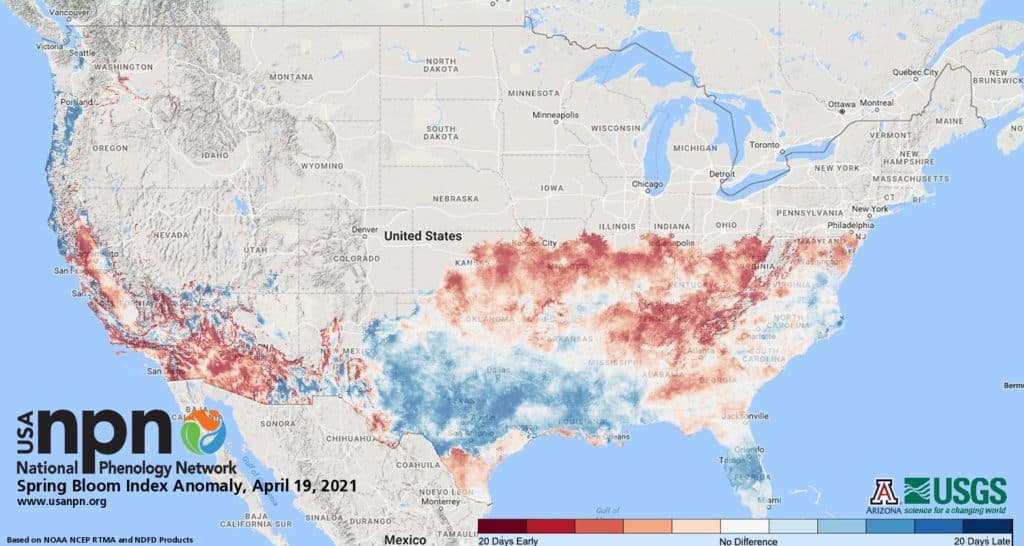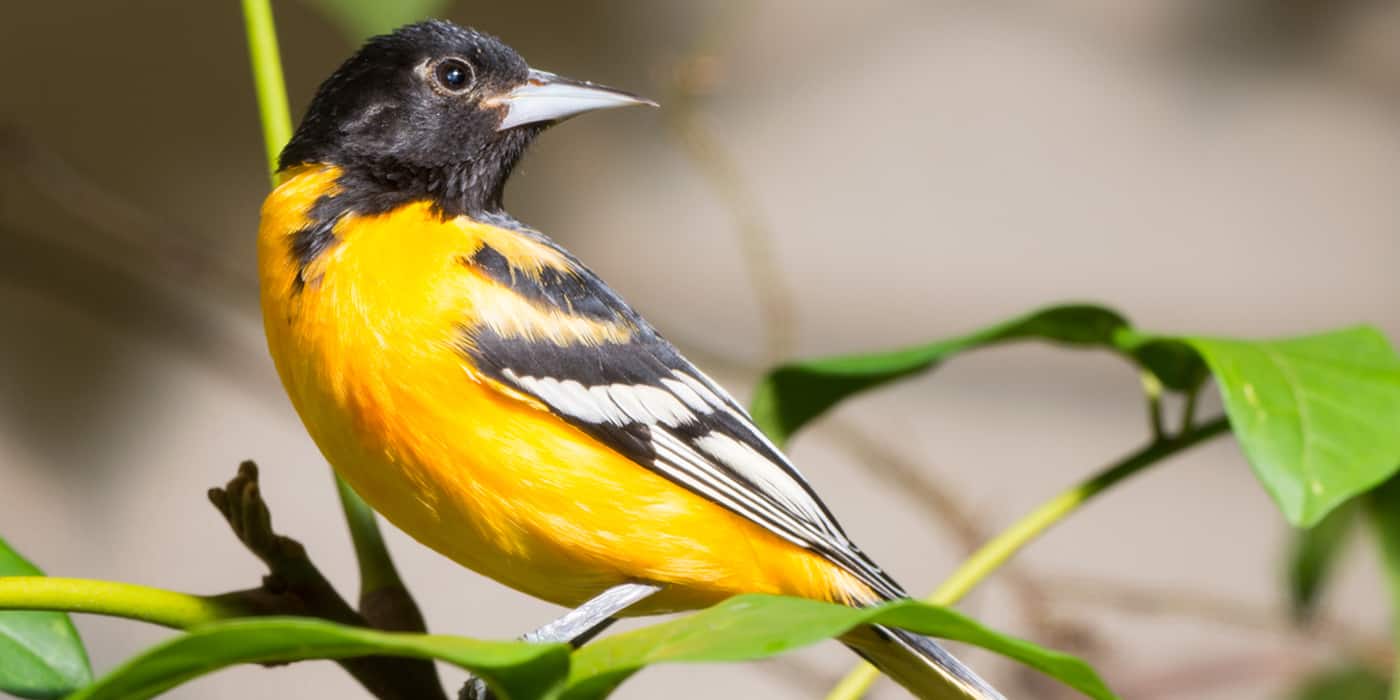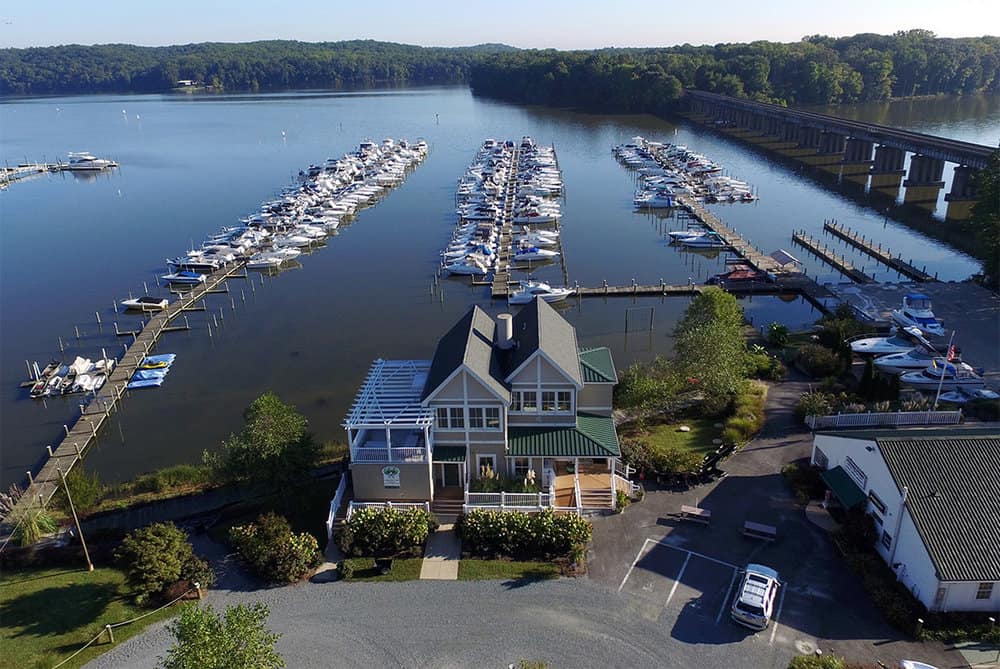As winter turns to spring, Baltimore orioles migrate several thousand miles from their winter home in Central and South America to their summer home in the eastern United States, where they’ll nest, lay eggs, and raise young before making the long trip back in the fall.
The problem for the oriole, however, is that warming temperatures from climate change have been steadily moving forward the start of spring.
“It’s important for the oriole to arrive on time because they have to feed their young,” said Emily Cohen, assistant professor at the University of Maryland Center for Environmental Science (UMCES). “The birds need to nest at the right time so that caterpillars and other insects they like are in peak abundance.”

In a new set of maps, the National Phenology Network (NPN), a research center monitoring the timing of natural events, and Climate Central, a climate research nonprofit, use temperature models and observational data of the first blooming of lilacs and honeysuckles—early season plants—for the past 40 years to show just how much earlier spring has shifted.
The data show that Norfolk, Baltimore, and DC’s springs all arrive earlier than they used to, at 5, 9, and 11 days earlier, respectively, according to Climate Central’s analysis. An earlier spring is a big deal for farmers too, especially because it becomes harder for farmers to predict when the last frost is going to be.
David Tana is the restoration, volunteer, and outreach coordinator in the Chesapeake Bay Foundation’s (CBF) Maryland office. Up on CBF’s Clagett Farm in Upper Malboro, Tana talked about how a late frost last year cost them a whole crop of cucumbers.
“These temperature swings are going to cost people dollars,” he said. “The warm season is going to be longer, but weather patterns are also becoming less predictable.”
While it might seem nice to have shorter winters, an earlier spring might not be good for people either. Mosquitos will thrive with more warmth. People with allergies might suffer more, too. “Since the growing season is longer, the pollen season is longer too,” says Sean Sublette, a meteorologist from Climate Central. “Some studies have also shown that with more carbon dioxide, there’s physically more pollen in the atmosphere.”
Looking to the future, both Sublette and Theresa Crimmins, director for the USA National Phenology Network, emphasize that modeling a shifting spring is complex, especially because other factors like coastal weather and urban heat can complicate the data analyses. “Not every species gets going at the first warm event,” Crimmins said. “Many need it to be warmer before they start.” An earlier spring doesn’t necessarily mean that things will change in other seasons either, Crimmins points out: “We are looking at a snapshot in time.”
And while winters are expected to shorten, we won’t lose them entirely Sublette says. In the future, though, “the climate of the middle Atlantic and around the Chesapeake is going to begin to mirror something more like what we see in Georgia and South Carolina,” he says.
–Emma Johnson




